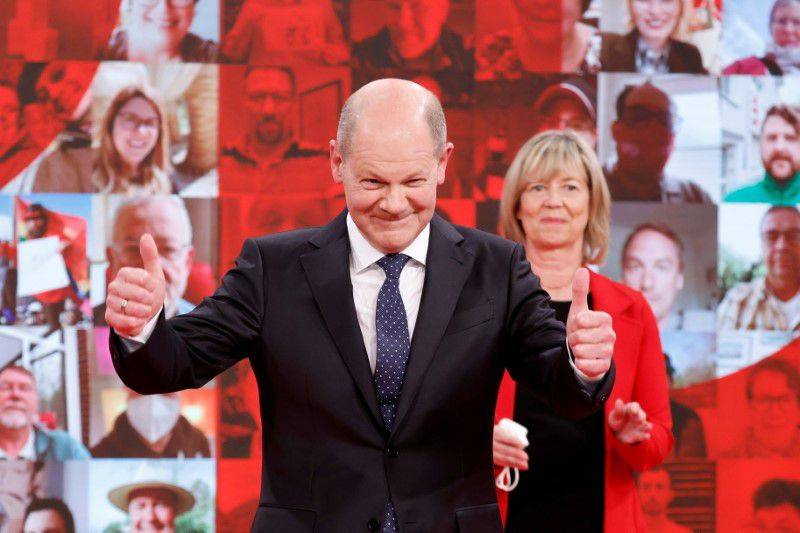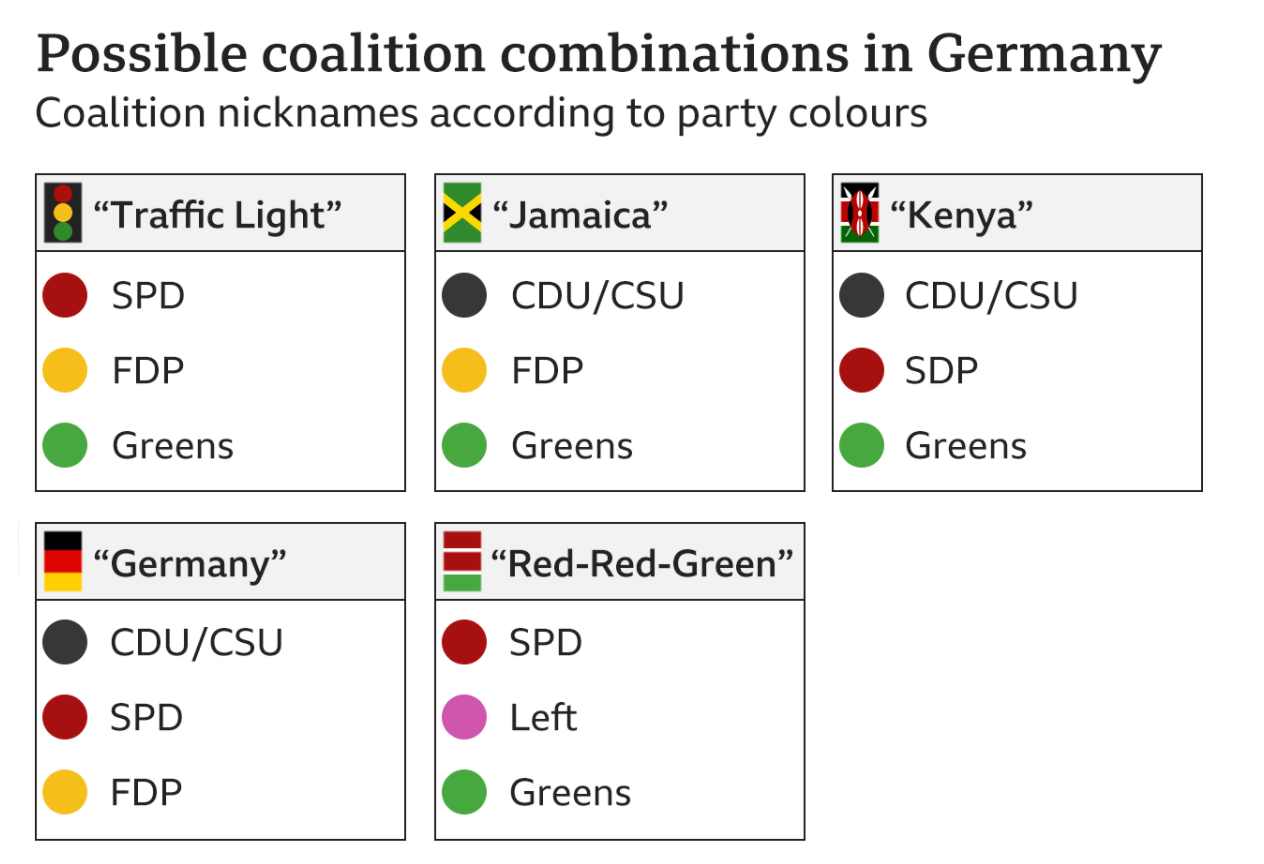According to foreign media reports, on September 26 (Sunday) local time, millions of Germans went to the polling station to vote to determine the formation of the next German government. The polling time of each polling station is from 8:00 am on September 26th to 18:00 pm on September 26th local time (from 14:00 pm on September 26th to 24:00 pm on September 26th, Beijing time), but many people have already mailed their ballots Way to vote.
The four-year German Bundestag election was held on September 26, local time, and the new German government will be formed based on the results of the election. The current Chancellor Angela Dorothea Merkel has previously announced that he will not stand for election, and Germany will officially enter the “post-Merkel era” by then.
Germany implements a parliamentary republic, and the parliament is composed of the Bundestag and the Bundesrat. The Bundestag elections are held every four years. The political party or coalition of parties that wins the election has the right to form a cabinet and select the candidate for the Federal Chancellor.
In this year’s Bundestag elections, more than 60 million Germans over the age of 18 are eligible to vote. They will elect seats in the Bundestag from various political parties and the result will be candidates for prime minister. The voting ends at 16:00 GMT on September 26 (24:00 on September 26, Beijing time), and the general vote trend will be shown at that time. Affected by the new crown epidemic, due to the increase in postal votes in this election, the final statistical results may be released in a few weeks.
Merkel and Ruling Party Prime Minister Candidate Raschelt
At present, a total of six parties in Germany have announced their candidacy. These parties are the CDU/CSU (CDU/CSU), Bündnis 90/Die Grünen (Bündnis 90/Die Grünen), and the Social Democratic Party (SPD). ), the Choice Party (AfD), the Liberal Democratic Party (FDP) and the Left Party (Die Linke). The center-right party led by the current German Chancellor Merkel, the Coalition Party, has been in power for 16 consecutive years.
Opinion polls for the general election have been vacillating for months. Initially, the Coalition Party (a conservative coalition formed by the two sister parties of the CDU and CSU) was in the leading position in the polls, and the support rate of the Green Party was once the leader. In April of this year, the poll data released by the authoritative German polling agency Forsa (Forsa) public opinion survey showed that for the first time, the support rate of the Green Party surpassed that of the Coalition Party, which has been ranked first in more than ten years, reaching 28%, but the support of the Green Party After reaching its peak in May, the rate began to decline, and its approval rating fell to 15.5% in the poll on September 8. Recently, the Social Democrats under Olaf Scholz’s polls have soared and overtaken their old rivals, the Coalition Party, but the SPD only leads the Coalition Party by two or three percentage points.
Foreign media commented that of the three candidates competing for the post of prime minister, Scholz was the most inspiring voter enthusiasm. As the deputy to the current German Chancellor Merkel, Scholz is more likely to be seen as a continuous candidate for the post than conservative candidates.
But even if Scholz wins, according to existing polls, he is likely to need the support of the other two parties to form a coalition government. At present, it seems that perhaps no party will gain a clear lead in this election.
 Scholz
Scholz
Merkel also personally solicited votes for the ruling party’s prime minister candidate Armin Laschet (Armin Laschet). She said: “In order for Germany to remain stable, Raschelt must become prime minister.” The coalition candidate Raschelt is the current governor of North Rhine-Westphalia. As a representative of the centrist in the CDU party, Raschelt won the election for the chairman of the CDU party in January this year and was elected as the prime ministerial candidate of the coalition party in April this year.
According to the final poll data (as of September 24), the current support rate of the Social Democratic Party is about 25%, and the support rate of the Coalition Party is 22%, followed by the Green Party, which has a support rate of nearly 16%, and the Liberal Democratic Party The approval rate of both the Party and the Chosen Party is around 11%.
In the German electoral system, the German government needs to obtain a 50% majority in the parliament. According to the current poll results, no political party can get so many voters’ support. Therefore, the formation of a coalition government may be an option for the new government. The formation of a coalition government requires a total party support rate of more than 50%, as well as inter-party discussions. Therefore, even if there is a clear winner in the election results tonight, the formation of a new German government will still take some time to determine.
Earlier, the Social Democratic Party had expressed its reluctance to join the coalition in power. Therefore, the party in power in the future is likely to have a three-party alliance consisting of one large party and two small parties. This has greatly increased the importance of small parties and brought more uncertainty to the future formation of the cabinet. The addition of more small parties will also affect the policy direction of the new government.
According to media reports, according to the current polls, the Social Democratic Party may become the largest party in the Bundestag election on September 26, first having the right to form a cabinet.
If the Social Democratic Party becomes the largest party, the most likely way to form a cabinet is to form a government jointly by the Social Democratic Party, the Green Party, and the Liberal Democratic Party. The support rates of these three parties add up to more than half, and because their representative colors are red, green, and yellow, they are called “traffic light combinations” (combined with the results of polls, analyze possible party alliances, and use the representatives of each party Color description).
In addition, the possibility of a joint cabinet formed by the Social Democratic Party, the Left Party and the Green Party is not ruled out. The support rates of these three parties add up to nearly half, and they can form a “red, red and green combination” according to their representative colors.
However, if the Coalition Party overtakes the Social Democratic Party in the next period of time, and the Coalition Party will once again become the largest party, then the most likely way for the Coalition Party to form a cabinet is to form a ruling coalition by the Coalition Party, the Green Party, and the Liberal Democratic Party. The representative colors of these three parties are black, green, and yellow, which happen to be the three colors of the Jamaican flag, so they are also called the “Jamaica Combination” by the outside world.
 If you are a center-leftist, you can look for the parties in red, yellow, and green; if you are a conservative, you can look for the parties in black, yellow, and green
If you are a center-leftist, you can look for the parties in red, yellow, and green; if you are a conservative, you can look for the parties in black, yellow, and green
According to foreign media reports, even if there is a clear winner in the Bundestag election on the evening of September 26, local time, the Germans may not know the composition of the government for some time to come. The winning party still needs to form a coalition government, and it seems unlikely that the ruling party formed by the Coalition Party and the Social Democratic Party will happen again. This is why the Germans talk about “traffic lights”, “Jamaica” or “Kenya Union” political party alliances.

(Editor: Ruiyang)Return to Sohu to see more
Editor:
Disclaimer: The opinions of this article only represent the author himself. Sohu is an information publishing platform. Sohu only provides information storage space services.
.